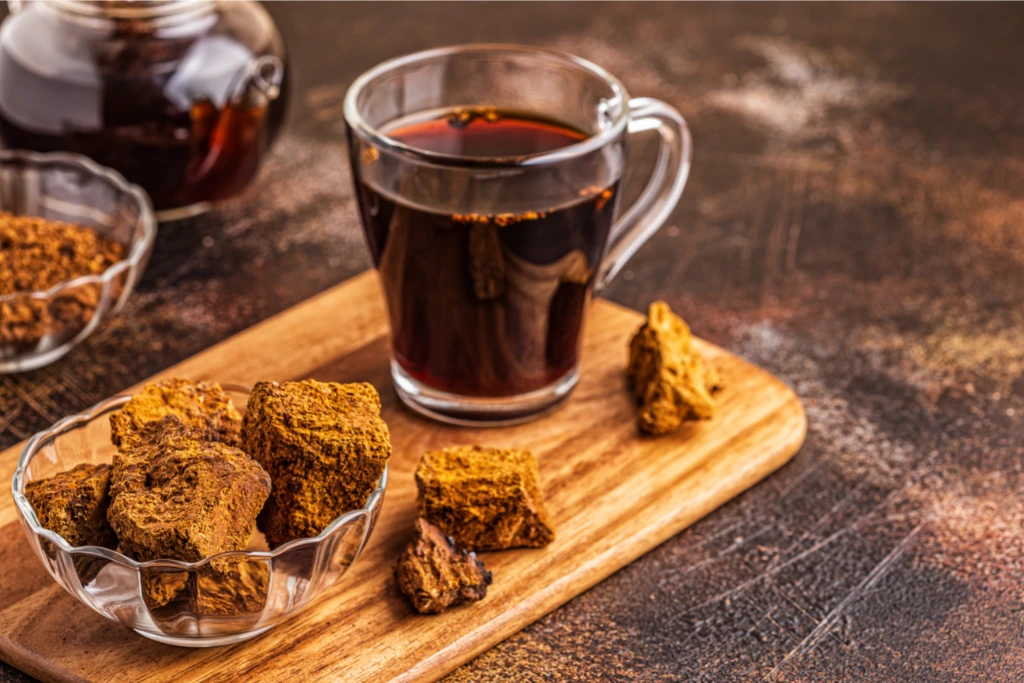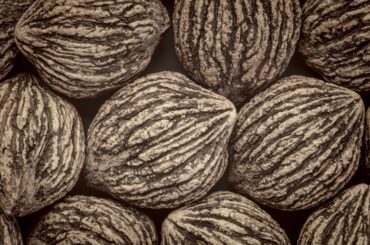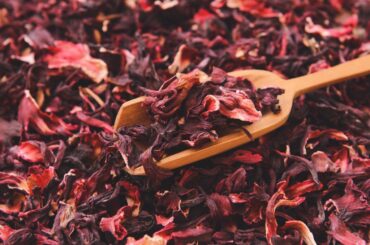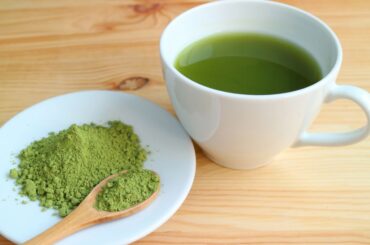You’ve probably heard about chaga tea and its health benefits. Wondering how you should prepare this drink to experience the maximum nutritional benefits? Then you’re in the right place.
People living in Canada and New England may have noted a large mole growing out of most birch trees. This is the chaga mushroom. You might wonder if it’s edible since it has a black outer skin. Chaga, however, has bright orange flesh once you cut it open.
If you’re a fan of ginger, then you have to try this chaga tea recipe. It’s warm, comforting, and tastes great with milk or honey!
What is Chaga Tea?
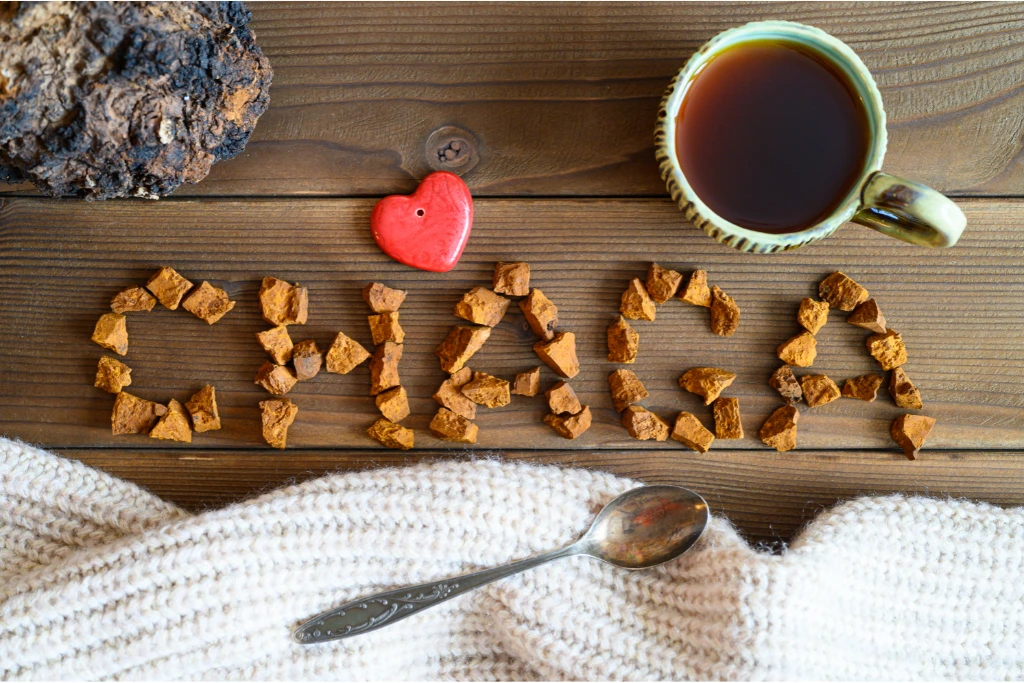
Chaga tea is a beverage brewed from a fungus called the chaga mushroom. Chaga grows on birch trees and is a perennial fungus found in northern climates, including Russia and Japan.
The chaga mushroom has a growth period of about 15 years. It can swell up to 11 pounds, requiring an ax. It’s made into a medicinal ingredient, including as a tea in most health stores. The fungal extract has been used for centuries in Siberia and other parts of Eastern Europe to help cure various ailments, including cancer.
It’s not your usual tea. In fact, it’s considered among the strangest tea varieties in the market. So, how do you make this mushroom into chaga tea?
What Does Chaga Tea Taste Like?
Chaga tea may not be as popular as green tea or any floral tea, but it’s being increasingly consumed by many as of late because of its many health benefits. The reason why it’s not as preferred is that many are unsure of what chaga tea tastes like.
If you haven’t tried it yet, you may have the misconception that it tastes like a regular mushroom, but it doesn’t. Chaga has an earthy flavor with hints of bitterness. It’s the reason why only a few people drink chaga tea straight, as the flavor can be unappealing.
A workaround is to complement it with other herbs and spices, such as honeybush, ginger, or turmeric.
Chaga Tea Benefits
If you’re thinking of making this tea at home, you must be curious about the health benefits of chaga tea.
For centuries, people drank chaga tea for its medicinal properties, particularly as an immune booster and antioxidant. Studies show that the antioxidants found in chaga provide the body with anti-inflammatory properties that help reduce inflammation throughout your body by decreasing oxidative stress caused by free radicals (unstable molecules).
While chaga tea offers health benefits, it’s still best to seek consultation from your health specialist. They should tell you how much you can consume in a day.
What is chaga tea good for? Below are some of the benefits of drinking chaga tea:
Blood Sugar Control
Chaga tea is a good source of antioxidants to help lower blood sugar. Chaga also contains beta-D-glucans (also known as polysaccharides), which have also been shown to help lower blood sugar levels.
Fights Inflammation
Antioxidants fight inflammation and can help lower your risk of cancer. Green tea, turmeric, and ginger have all been shown to contain antioxidants. Chaga has also been found to have anti-inflammatory effects by inhibiting the production of cytokines in your body.
Cytokines are responsible for inflammation, which is why they’re so bad for you. If you’ve ever experienced a cold or flu after being around other people who were sick, then you know what it feels like when your immune system gets overwhelmed by symptoms from all those viruses floating around out there!
Betulinic acid (BTA), inotodial (ITG), and ergosterol peroxide (ERO) are three compounds found within chaga that work together as antioxidants because they inhibit the production of cytokines and thereby reduce inflammation throughout your body:
Helps Cancer Prevention
Studies show chaga tea prevents cancer. The high levels of antioxidants found in chaga may help fight cancerous cells by blocking their growth or slowing their progression. Multiple studies have shown that compounds in Chaga mushrooms may help block or slow the growth of cancer cells.
Studies conducted on lung and colorectal cancer cells showed that chaga polysaccharides blocked the ability of these types of cancers to metastasize (spread) through tissue invasion and lymphatic spread, both key factors in causing metastasis.
These findings are promising because they suggest that chaga could be an effective treatment option for those suffering from this type of disease by targeting multiple mechanisms responsible for tumor development.
Provides Liver Protection
The sclerotium, or the outer portion of the chaga mushroom, has high levels of polyphenols, which are antioxidants that protect against free radicals that may lead to liver and other organ damage. This area needs more study, however, to establish the effectiveness of chaga mushrooms for liver protection. This finding points in a positive direction.
Experts also say that chaga tea can improve gastrointestinal health by removing toxins from your body through regular consumption.
The health benefits of chaga tea are still being studied by researchers today, but studies have shown that it may help control blood sugar levels, improve heart health, and protect against inflammation in the body. It also appears to be an antioxidant that can fight free radicals; two issues that are common among people who suffer from chronic illnesses, such as heart disease, cancer, and liver issues.
Chaga Tea Side Effects
Chaga tea may have health benefits, but it also comes with side effects. That’s why it’s always best to consume in moderation. Consulting your specialist will help you know if the tea is safe.
High Levels of Oxalates
Chaga has high oxalates, a chemical compound that impedes the body’s ability to absorb nutrients. These oxalates quickly bond with calcium, which can lead to the development of kidney stones. When prolonged, it can even lead to kidney failure.
Promotes Blood Thinning
According to studies, chaga tea compounds the effects of blood thinners, meaning it’s easier for patients to bleed out.
Lowers Blood Sugar
Diabetic patients should be careful when drinking chaga tea, as it can cause sudden drops in blood sugar. Drinking chaga can bring down sugar to critical levels if one takes insulin. One will experience dangerous hypoglycemia that can lead to coma or death.
As of late, little is known about the long-term effects of chaga tea consumption, including as a dietary supplement.
Chaga Tea Ingredients
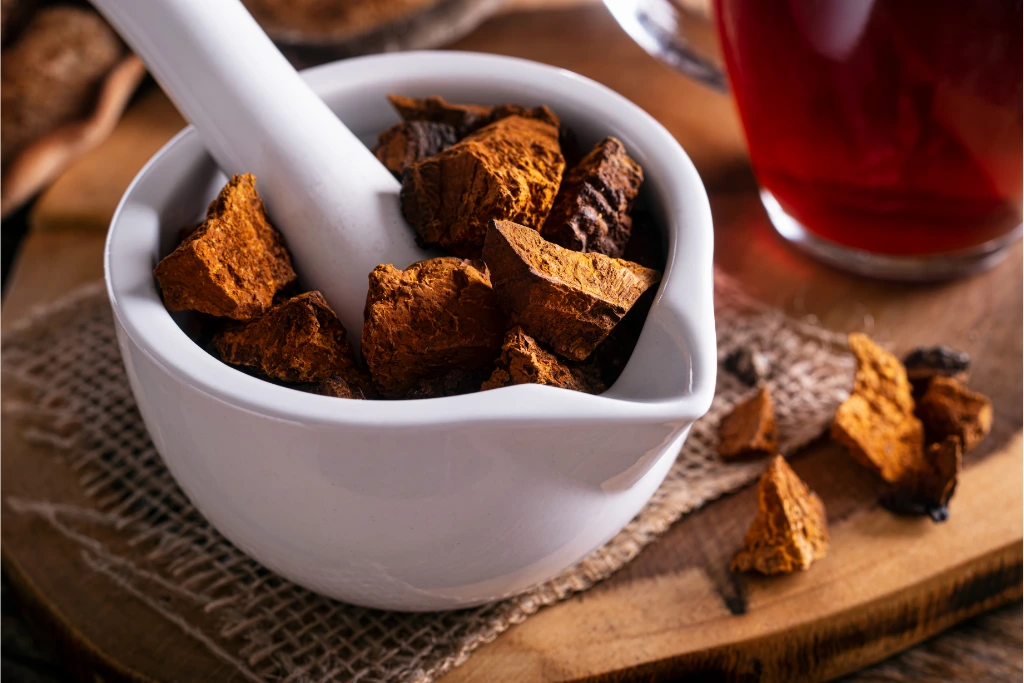
Yield: 2 cups
Prep Time: 15 minutes
Cooking Time: 20 minutes
Here’s what you need:
- Chaga mushroom (2 tea bags or 2 1cm chunks): This is the main ingredient of the tea. You can find it in most health stores or local organic grocery stores. It comes in two forms: tea bags or chunks of mushrooms.
- Water (1 liter): Be sure to use spring water, with no additives or chemicals added to it, as these can negatively impact the taste of chaga tea and may cause an adverse reaction in some people with sensitive stomachs or allergies.
- Honey (1 tsp per cup): We recommend using raw honey to control how sweet your chaga tea will be, ranging from lightly sweetened to highly sweetened, depending on how much honey you decide to use. If you don’t have access to raw honey, then regular white cane sugar works fine, too!
How to Make Chaga Tea
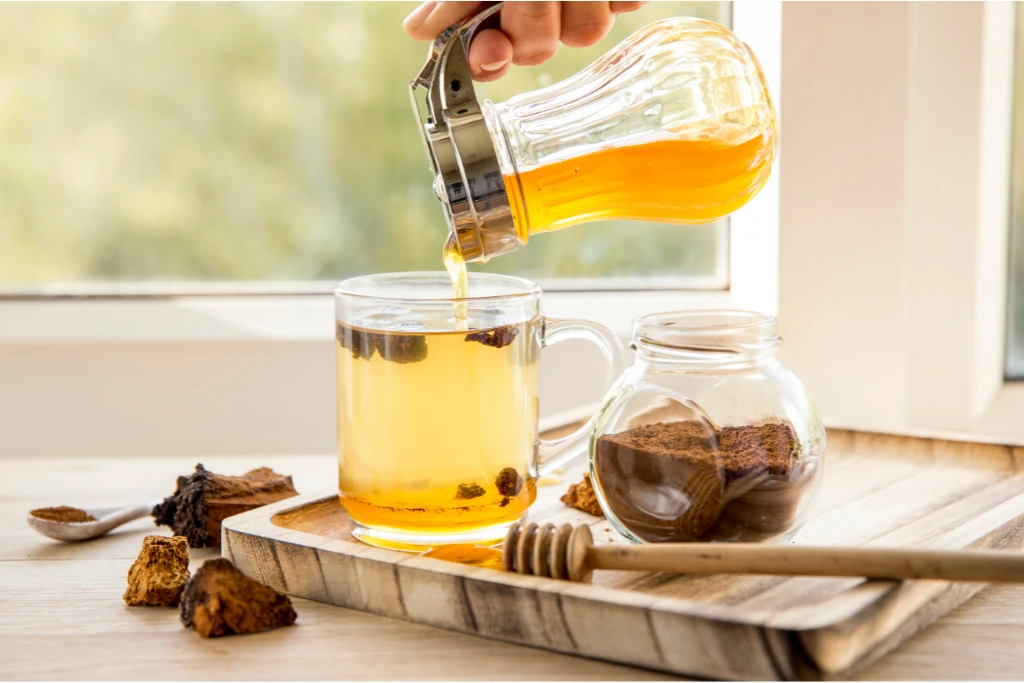
Curious about how to prepare your chaga mushroom tea? Follow this recipe:
- Prepare the chaga mushroom.
If your chaga mushroom comes in chunks, you need to make them small enough to fit a coffee grinder. If you don’t have a coffee grinder, you can wrap them up in a cloth before hammering them into smaller bits.
Small chaga mushroom chunks will allow you to brew them properly, giving you the full nutritional benefits.
- Heat the water
When boiling water, you have to choose an appropriate pot. Chaga will stain because of its long brewing time, so using a porcelain pot will surely stain. It’s best to use a stainless steel pot for this purpose.
Keep the water temperature between 140 and 160 degrees Fahrenheit. Using boiling water on chaga tea will strip away the antioxidants.
- Brew the chaga tea
Steeping the chaga tea chunks can take up to an hour, depending on how fast your water cools down. Let it sit for three minutes before straining any remaining bits of mushroom material (this will take some time). If you’re using tea bags, you can steep them for 4 to 6 minutes.
Use a tea ball or infuser suspended in your cup. Add honey to taste.
Notes:
- Remember, chaga preparation matters.
- You can also add other spices, such as ginger or turmeric, if you want to dampen the earthy flavor of chaga.
- You can also add milk to your chaga tea.
- For leftover tea, you can refrigerate it for up to seven days. It’s also okay to reheat the tea.
Conclusion
Chaga tea is a fantastic drink that you can make at home. It’s easy to make, packed with nutrients, and tastes great! Do you plan to have this tea anytime soon?
FAQs
Does chaga need to be dried before making tea?
Yes. After harvesting chaga, the mushrooms must be cleaned and dried. You can bake them for 24 hours, with a temperature set at 110 – 115 degrees Fahrenheit. You can also use a food dehydrator or allow it to dry naturally in a warm, dry place in your home. This last option may take several days.
What is the best way to ingest chaga?
The best way to consume chaga is by preparing it as a tea. That’s when the chaga mushrooms will have their most pleasant taste.
How many times can you boil chaga chunks?
You can reuse chaga chunks up to five times. Again, make sure the water is not boiling hot. After steeping them, remove them from the water immediately and store them properly.

